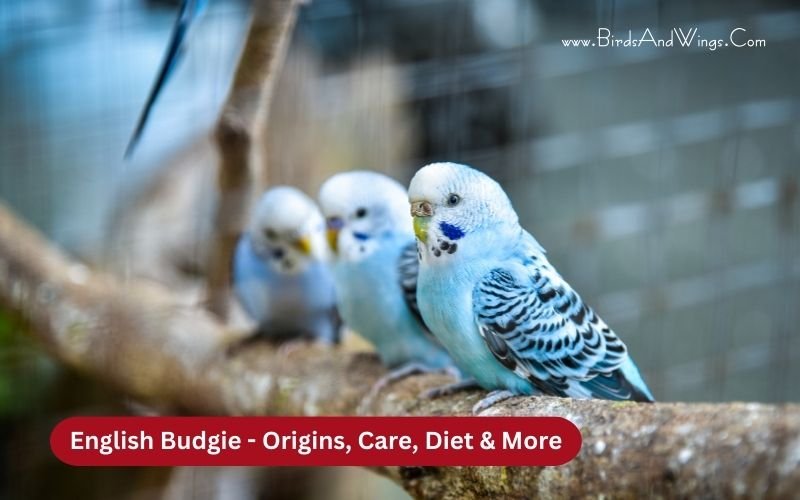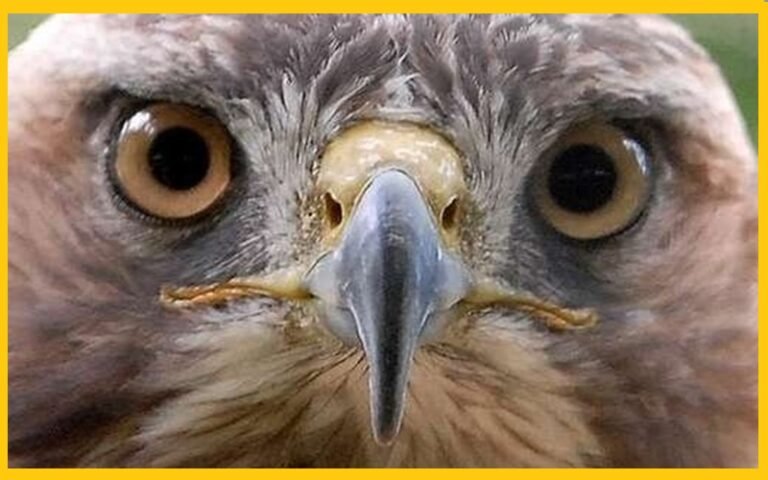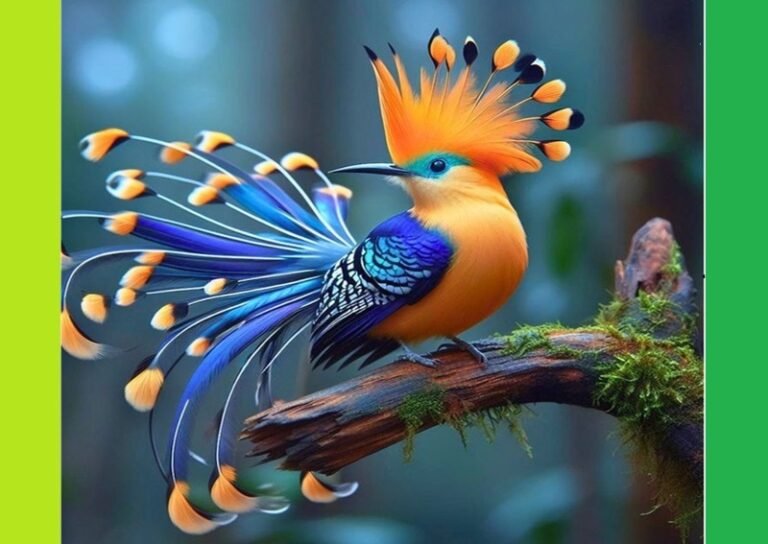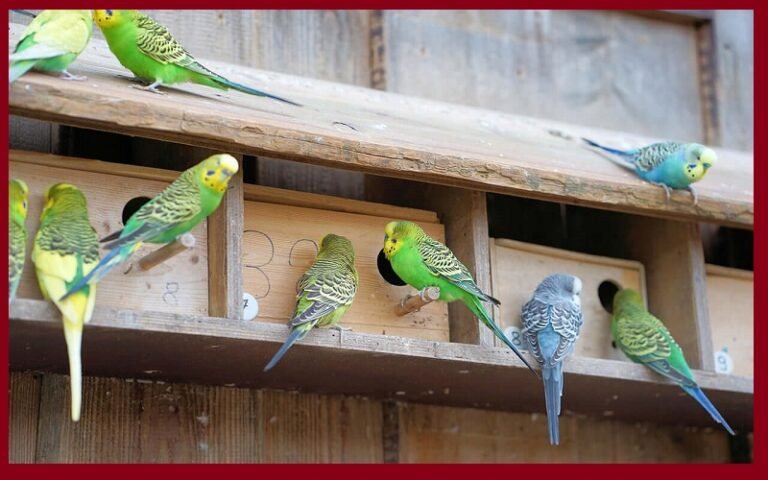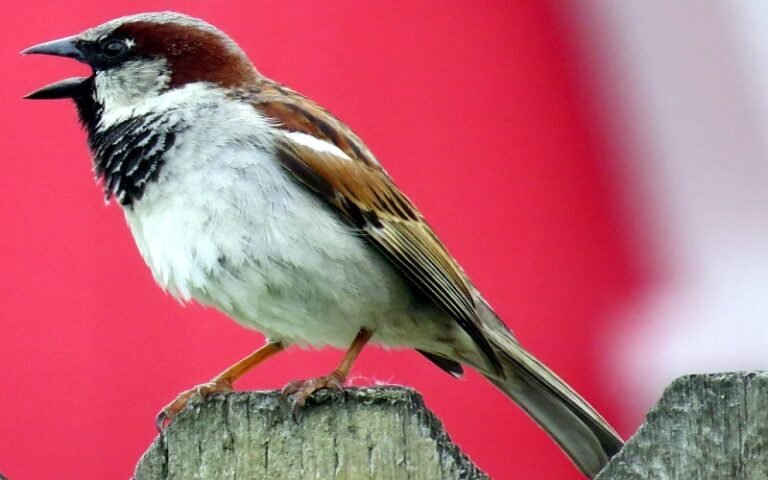English Budgie – Origins, Care, Diet & More
When walking into a pet shop, you may notice a pair of small, colourful birds with defined blue or yellow plumage, which are pretty curious! These birds, known as the English Budgie, are spirited and friendly. They are curious about humans and quite easygoing.
Pet owners love these little birds, which belong to the parrot family, because of their pleasing colours and friendly nature.
Most English Budgies are easy to domesticate because they are selectively bred. Their vibrant yellow and blue colours will add a funky touch to your home.
The English Budgies are comparatively larger than their American counterparts but have a shorter lifespan.
If you’re looking to get a pair of sweet English Budgies, you must know all about them.
Here are some information which will help you to raise them.
English Budgies History and Origins
English Budgies have a fascinating history. They look different from other Budgies but share the exact origins. Most Budgies originated from Australia and were discovered by the Aboriginals. The birds were integrated into their culture and a popular food source.
In the 1800s, these species were found in Europe; boy, they became the rage! Their colourful feathers and fun-loving personalities made them popular among bird lovers.
Slowly, as people started to breed them, they began to experiment with the Budgies and their feathers, leading to a mutation which created several different colours of feathers. The English Budgies are also called ‘Exhibition Budgies’ because they were mostly used for displays in European homes.
Nowadays, English Budgies are still selectively bred and remain popular among pet lovers.
Physical Characteristics of English Budgies
Size and colour variations of English Budgies
The English Budgies weigh around 0.7 to 20.1 ounces, measuring 10 to 12 inches. They are larger than Common Budgies, but selective breeding and domestication reduced their lifespan to only 7 to 9 years. They have bright green and yellow markings on their feathers. The English Budgies are also heavier than Common Budgies, weighing around 65 grams.
Feather features and patterns
The males have a soft blue hue around their beaks, while the females have pink ones. Unlike other Budgies, the English Budgie has more defined marks on its feathers. Their foreheads are quite fluffy to the point their eyes are almost covered.
Their cute and fluffy cheeks are also a delight when they majestically perch in their cages. English Budgies also have heavier throats than Common Budgies.
Distinctive physical traits
Other than their puffy forehead and cheeks, the English Budgies have refined and distinct markings on their backs. Moreover, their feathers are shinier and cleaner than other Budgies because of their breeding conditions.
Diet and Nutrition Facts
Nutritional needs and dietary preferences
The English Budgies need the right combination of seeds, vegetables, pasta, pellets, and whole-grain bread to keep them healthy and well-fed. Mix some parakeet seeds with canary seeds in a 75:25 ratio. They may also be fed sprouts from sunflowers and carrots, which are cooked.
Recommended food options and supplements
Other than the ones mentioned above, sweet corn and sweet potatoes are also healthy options, but they should be lightly cooked. Budgies are small, so they need small portions of food, so make sure that the portions are around a teaspoon full.
If you have young English Budgies, feed them formula, an alternative to calcium, significantly when growing their beaks. Protein-rich food is also a good option.
Common health issues related to nutrition
English Budgies must never be fed any carbonated drinks, salty food, fried food, chips, or bacon. Even vanilla, butter, alcohol, cakes etc., should be avoided. Stick to the greens and seeds to feed the English Budgies.
Moreover, many people think that mushrooms and onions are safe for them, but it only works in some cases. Avoid feeding them anything of that sort.
Breeding and Reproduction Of English Budgies
Sexual dimorphism and maturity
Budgies can breed after six months, but if you are breeding them, it is best to allow them to breed when they reach one year old. If they become parents young, they cannot nurture their babies. Mature females can breed for up to four years and males for up to six, so hurrying them into breeding is unnecessary.
Nesting requirements and breeding pairs
English Budgies need a nest to breed. If you have pet English Budgies, you can take wooden boxes and make a nest in them. They do not need a lot of things in their nest other than some soft shredded paper, and the boxes should have concave for the young birds to hold and stand.
The female bird may lay the egg outside the box, so you should put it inside it so the mother bird knows to lay her eggs in the box next time.
Incubation period and chick care
The female bird can lay up to eight eggs and incubate each for 18 days or longer. If an egg does not hatch after 23 days, it will not.
As for the others, the mother takes responsibility for incubating them. After the sixth egg is hatched, the young one may be in danger because the elder one will stomp on its fragile body.
If there are more than six eggs, it will be best to hand-feed the smaller birds. Make sure to clean your hands or use gloves when handling the chicks.
One thing to note is that English Budgies are not seasonal breeders but opportunistic ones. They will breed whenever the conditions are favourable, especially during the wet seasons. While it is perfectly natural to do so, ensure they breed only sometimes.
Laying so many eggs quickly will deteriorate the female’s health and make them sick. Let the birds take long breaks between breeding.
Socialisation and Training of English Budgies
Taming and building trust
English Budgies are bred by humans from a young age, so they are relatively easy to train. They are calm and friendly, so they have no qualms about mingling with humans.
English Budgies like to swing and play, so you should put out hanging perches for them to swing around. They respond to friendliness and like being pampered, so treat them right.
Also, they love toys, so you might want to bribe them with one to make sure they bond with you!
Teaching tricks and commands
Few people know, but English Budgies can mimic human words. They are usually calm and quiet, so people do not notice it, but if you listen closely, the English Budgies can say a few words. Talk to them regularly so that you can teach them a few words to utter.
Potential challenges and solutions
English Budgies are prone to yeast infection. If contracted, they may vomit, lose weight, and become weak. They may also contract tumours as they age. The best solution to this is to keep their cages squeaky clean.
Budgies need a clean home, and as the owner, you should keep the areas sanitized. Even their toys should be thoroughly washed so they do not contract diseases.
Another note is that the birds show affection by nibbling your skin. It may not bother you as an adult, but if you have children, it is best to keep them away from the birds. The sharp beaks might hurt the children and startle the birds when the children start to cry.
Conclusion
All in all, English Budgies remain one of the most popular choices to keep as pets. They are social creatures and need to be in a pair to survive.
Like all Budgies, the English Budgie can become depressed without company, so as a pet lover, you should make sure that does not happen. Keep them entertained whenever possible and let them mate at the right time.
Ensure their diet has plenty of proper nutrients, especially calcium. Indulge them with toys and love so your English Budgie can live a long, happy life.
Before buying any Budgies, purchase them from an authorized dealer. Sometimes, unscrupulous dealers do not take care of the birds and sell off poorly kept birds which die quickly. Hence, check their credentials before purchasing.
If you want to bond correctly with the English Budgies, buying young birds in pairs is best so that they will be attached to you as they grow.
Trust between a pet and its owner is essential to grow well. By establishing such trust, you can let them fly around in your home without worrying about them flying away into the wild. Just ensure your children are correctly informed on how to interact with them.
If you want to buy birds, then the English Budgie will be your perfect companion. Its cheeky, playful nature is bound to make you happy and at peace.

